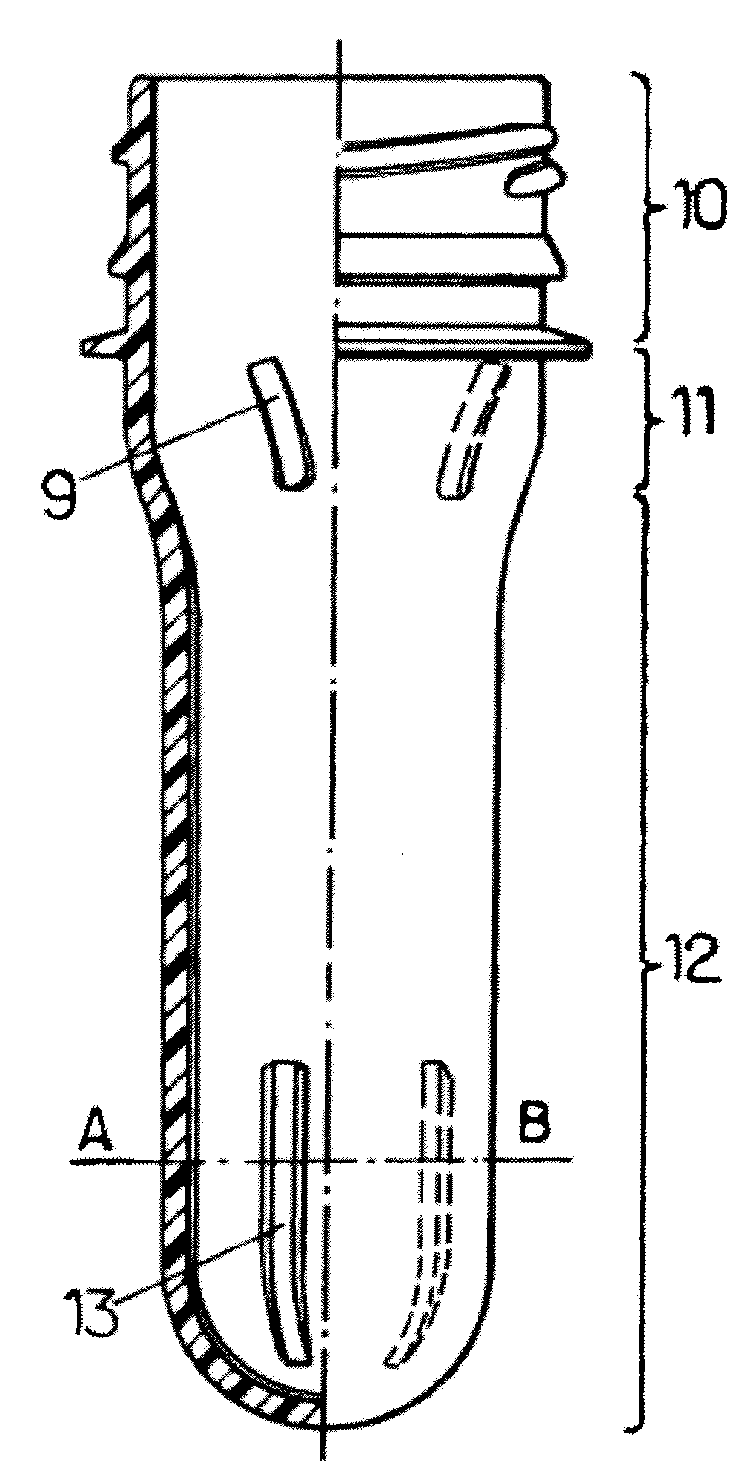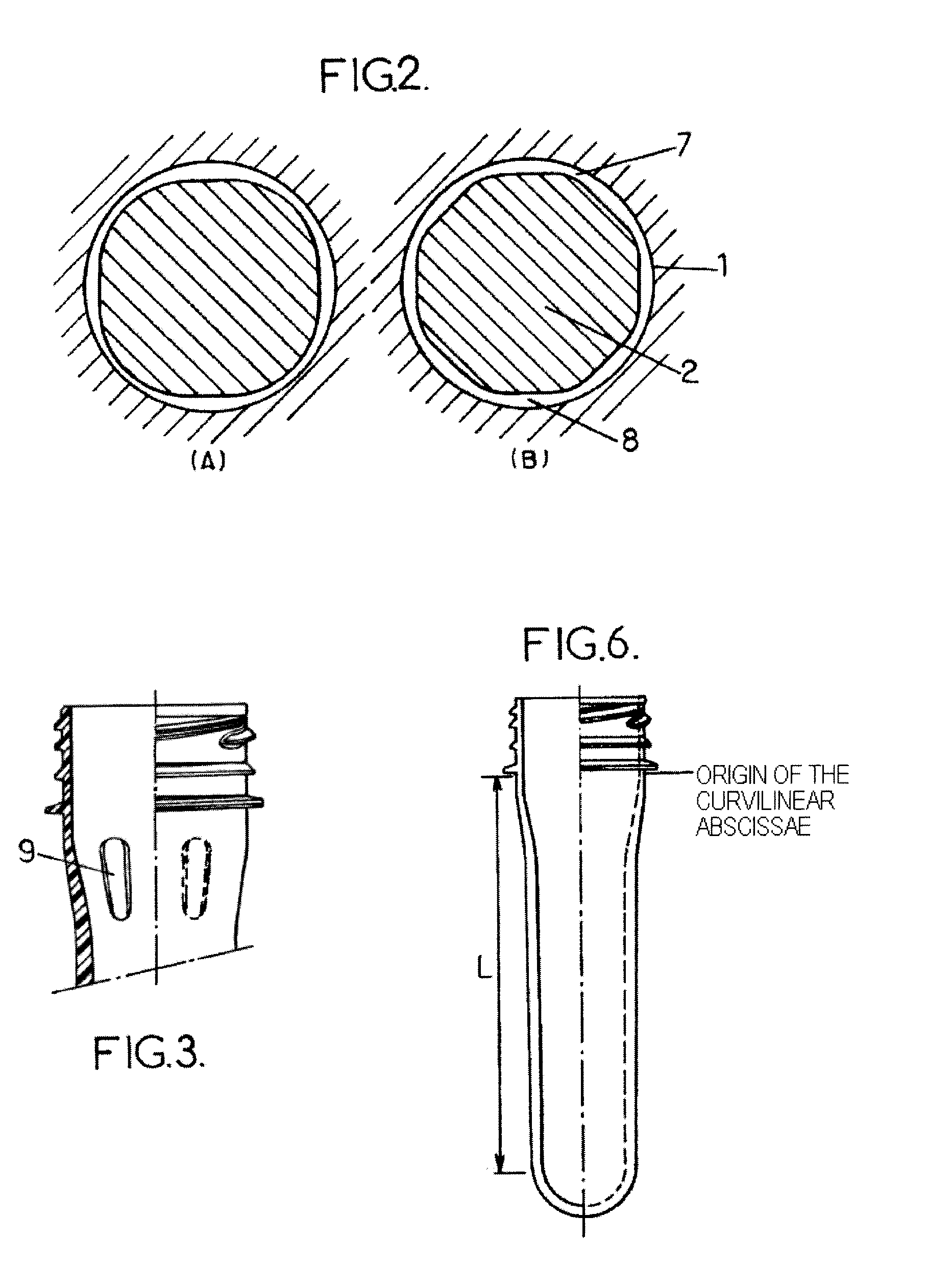Injection Blow Molding Device for the Manufacture of a Thin-Walled Part and Process
a technology of injection molding and thin-walled parts, which is applied in the direction of manufacturing tools, applications, drawing profiling tools, etc., can solve the problems of exceeding the technical capabilities of materials used, difficult to manufacture thin-walled parts by injection molding, and high pressur
- Summary
- Abstract
- Description
- Claims
- Application Information
AI Technical Summary
Benefits of technology
Problems solved by technology
Method used
Image
Examples
example 1
Conventional PET Preform (Weight 17 g; Length 90.44 mm) and Process for Obtaining it
Device Employed
[0093]The preforms are produced on injection molding machines equipped with a multicavity mold.
[0094]The PET material, predried so as to prevent hydrolysis as it undergoes melting, is transferred under gravity to the plasticization screw where it progressively passes from the solid state to the molten state. This plasticization must be carried out according to the rules of the art so as to achieve good homogeneity of the melt. The molten material is transferred forward of the screw by rotation of the screw, increase in the temperature and increase in pressure: extrusion.
[0095]There is a build-up of molten material forward of the screw, this material being transferred into the injection pot by the valve passing into the transfer position, and an amount of material corresponding to one complete mold (preform weight, in this case 17 g, multiplied by the number of cavities) is transferred....
example 2
Preform According to the Invention (FIG. 3)
[0111]The lightening of containers requires designing preforms of ever thinner wall thickness, the thickness / length ratio of which becomes less than 2. In this case, the design of the preform will include PFCs for allowing the cavity to be filled. The manufacturing process is the same as that presented above.
[0112]The lightening of the preform is achieved by changing the core (limited investment cost), thereby reducing the thickness of the preform.
[0113]Thus, for a preform of the same length as that of example 1, namely 90.44 mm, it will be possible to produce a lightened preform weighing 15.35 g. The average thickness of this preform will be 1.8 mm and this can be filled only in the presence of the PFCs in the mold.
[0114]The addition of the PFCs allows the injection pressure to be brought back down to between 100 and 130 bar, compared with a maximum pressure of 150 bar, which maximum pressure, without the addition of PFCs, nevertheless doe...
PUM
| Property | Measurement | Unit |
|---|---|---|
| length | aaaaa | aaaaa |
| thickness | aaaaa | aaaaa |
| circumference | aaaaa | aaaaa |
Abstract
Description
Claims
Application Information
 Login to View More
Login to View More - R&D
- Intellectual Property
- Life Sciences
- Materials
- Tech Scout
- Unparalleled Data Quality
- Higher Quality Content
- 60% Fewer Hallucinations
Browse by: Latest US Patents, China's latest patents, Technical Efficacy Thesaurus, Application Domain, Technology Topic, Popular Technical Reports.
© 2025 PatSnap. All rights reserved.Legal|Privacy policy|Modern Slavery Act Transparency Statement|Sitemap|About US| Contact US: help@patsnap.com



